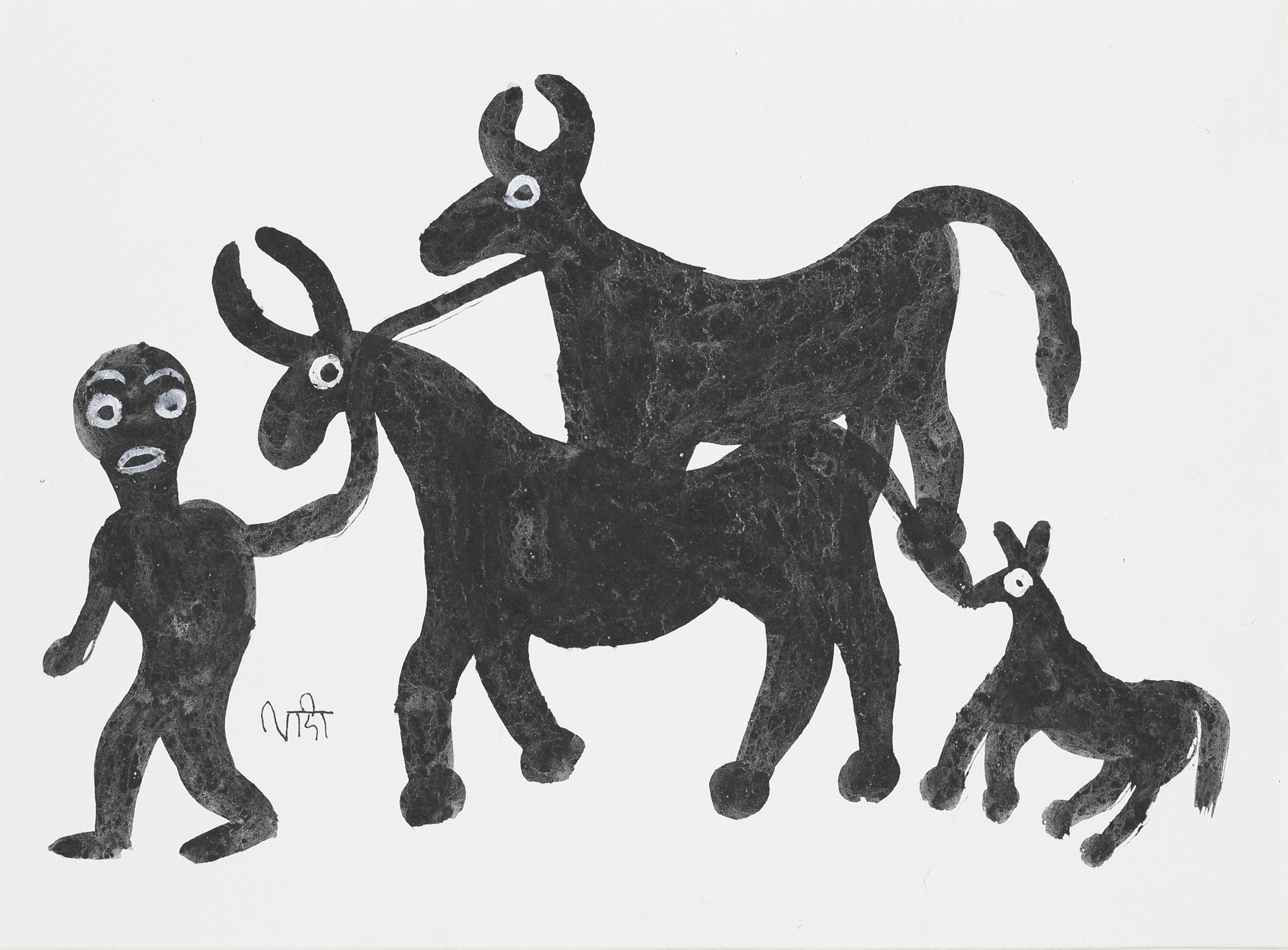
The Bhils are one of the oldest tribal communities of India, residing in western and central Indian states such as Gujarat, Rajasthan, and Madhya Pradesh. Like that of every other tribal community, the Bhil lifestyle is intricately connected with flora and fauna – as is clearly evident in the art they create. Bhil artists create imaginative and colourful forms that carry small dot-like patterns within. These are characteristic of paintings they make in their village walls and floors during the time of festivals and marriages.
This painting, created by Lado Bai, is notable for its departure from these characteristics of Bhil. It showcases a human figure leading three animal figures. Lado bai breaks Bhil art convention by not only omitting the dot patterns but also by putting man in the centre. This is also different from her usual practice, which is dominated by ritualism or animism. Lado bai is a Bhil artist born in the village of Jhabua in Madhya Pradesh. She used to make art on the walls of her house for recreational purposes way before she decided to pursue it as a profession. Her art was discovered in the 1970s by Jagdish Swaminathan, the then director of Bharat Bhavan. She was among the manual labourers employed for the construction of a new museum in Bhopal.
Like Bhuri bai, Lado bai went from being a labourer to an artist featured in the Arts centre at Bharat Bhavan, which became a launch pad for several tribal artists. Lado bai used to paint ritualistic gods in her house but the canvas freed her from these constraints and she began depicting wilderness, focusing on animism. Her work takes inspiration from stories passed on to her by elders in the tribe and she recreates them in unrealistic imaginative forms using bright colours.
Title
UntitledPeriod
undatedArtist
Lado BaiMedium
Charcoal and Resin on paperDimensions
H: 26.5 cm x W: 36.8 cmAccession No.
2020.8.4Genre: Indigenous & Tribal Art
